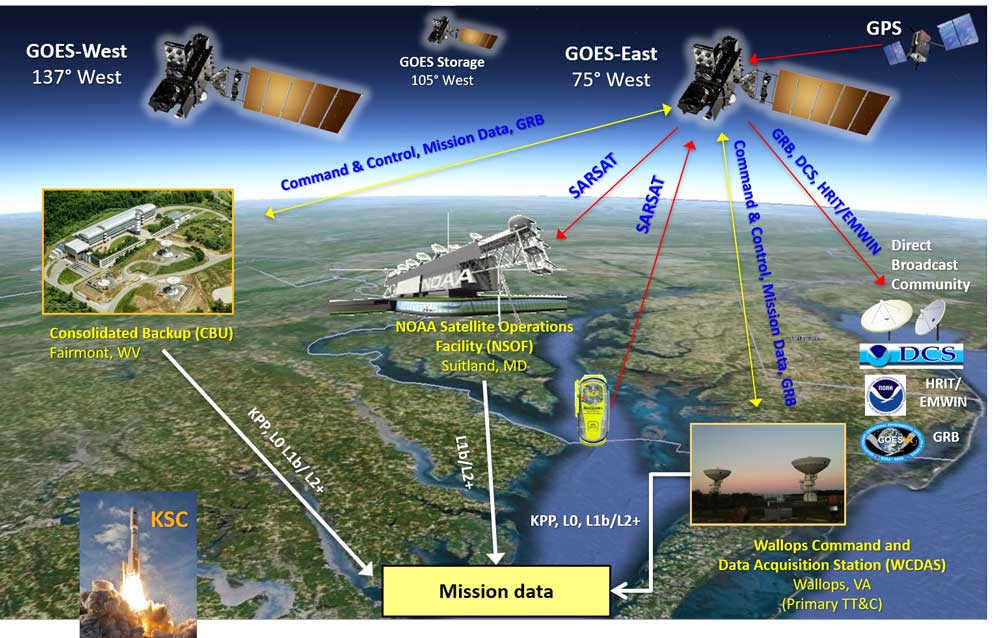Ground System: Overview
Download ground system fact sheetGround support is critical to the GOES-R Series mission. NOAA developed a state-of-the-art ground system that receives data from the GOES-R Series spacecraft and generates real-time data products. This is accomplished via a core set of functional elements (mission management, product generation, product distribution and enterprise management/infrastructure), an antenna system and a product access element.
The ground system receives the raw data from GOES-R Series spacecraft and generates Level 1b and Level 2+ products. The ground system also makes these products available to users in a timely manner.
The ground system operates from two primary locations: the NOAA Satellite Operations Facility (NSOF) in Suitland, Maryland, and the Wallops Command Data Acquisition Center (WCDAS) at Wallops, Virginia. A third operations facility in Fairmont, West Virginia, serves as the Consolidated Backup (CBU) in case of a systems or communications failure at either or both NSOF and WCDAS.
Roles and Responsibilities
The ground system receives the raw data from GOES-R Series spacecraft and generates Level 1b and Level 2+ products. The ground system also makes these products available to users in a timely manner consistent with the GOES-R Series latency requirements. Level 1b data from each instrument and Level 2+ data from the Geostationary Lightning Mapper (GLM) are distributed to direct readout users with antenna receives by means of spacecraft relay as GOES Rebroadcast (GRB). Level 1b products and Level 2+ products are provided to the Product Distribution and Access (PDA) System for users including the Comprehensive Large Array-data Stewardship System (CLASS) data archive.
Data Levels
| Level 0: | Unprocessed instrument data at full resolution |
| Level 1b: | Level 0 data with radiometric and geometric correction applied to produce parameters in physical units |
| Level 2+: | Derived environmental variables with comparable to Level 1 spatial and temporal resolution |
Prime Contractors
L3 Harris, of Melbourne, Florida, developed the GOES-R ground system. The 10-year contract covers design, development, testing, and implementation of the core functional elements.
L3 Harris was also awarded a separate 10-year contract to supply the ground antenna system for GOES-R. The contract includes design, manufacturing, and testing of six new antennas and upgrading four existing antennas at the three ground station facilities. Harris, under the core ground system contract, integrated the antenna system into the core ground system.
Solers, Inc. of Arlington, Virginia, developed the Environmental Satellite Processing and Distribution System (ESPDS), which provides the GOES-R Access Subsystem (GAS) functionality required for terrestrial, near-real time distribution of higher-order GOES-R products.
